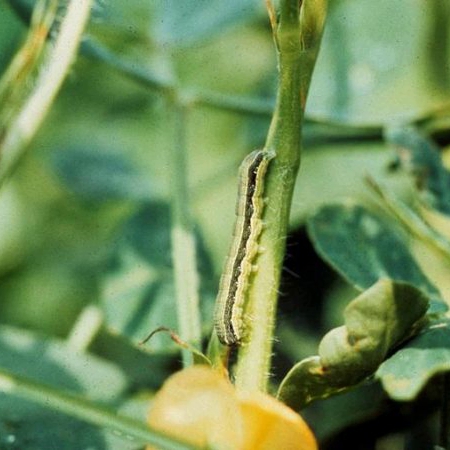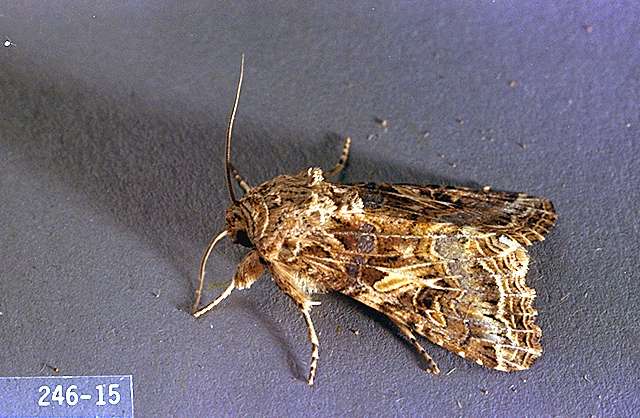
The eggs of Spodoptera exigua appear woolly and green they are shaped like a cone with a round bottom. Adults and larvae often are found together in forests and fields however, adults are not limited to their immediate surroundings, due to their ability to fly. Alternatively, if it is late in the season, the moths migrate to warmer regions or other countries, where their offspring have a higher probability of survival due to increased food availability and increased temperatures. Extensive crop damage commonly accompanies infestations by this insect. When the moths do not migrate before reproducing, armyworm population densities can reach infestation levels. If it is early in the season, adults may stay within the same region and reproduce in the spring or early summer. Most moths glide at 200 m above the ground, but some have been known to fly above 500 m. When an adult moth emerges from the pupal stage, it flies to elevations where winds can carry it long distances for migration. The environmental conditions and the host plant species directly influence the development of armyworm larvae, such that a warmer climate and nutritious host plants allow the larvae to develop more quickly. Beet armyworms use a wide variety of host plants, including vegetables, grasses, weeds, flowering plants and other crops, which the hatching larvae completely consume, leaving only the roots and leaf veins. Adults lay their eggs on the lower sections of host plants and on the top and bottom of leaves to prevent desiccation and predation of the eggs.

( Feng, et al., 2003 Ruberson, et al., 1994 Zheng, et al., 2011a Zheng, et al., 2011b)įound in temperate zones and tropical areas, Spodoptera exigua occupies a habitat that ranges from crop and grass fields to temperate and tropical forests.

Experts disagree about whether some adults migrate to low enough latitudes during the fall to survive the winter. exigua can complete multiple generations in a single warm season, it regularly spreads to higher latitudes during the summer into regions where it cannot survive during the winter however, the identification of specific overwintering regions is considerably controversial.

Beet armyworms were first recorded in the United States in Oregon in 1876 and now inhabit most of the southern states, reaching as far north as Maryland and northern California. It has been studied extensively in the United States and China. It is found in temperate and subtropical regions around the globe, including China, Japan, the United Kingdom, Scandinavia, the United States, South America, Africa, and New Zealand. Consequently, it has expanded its geographic range extensively outside of Asia, becoming an invasive species and crop pest throughout the world.

Spodoptera exigua, an insect known as the beet armyworm, is thought to have originated in southeast Asia.


 0 kommentar(er)
0 kommentar(er)
